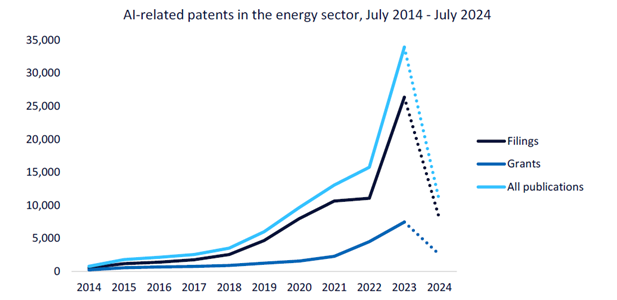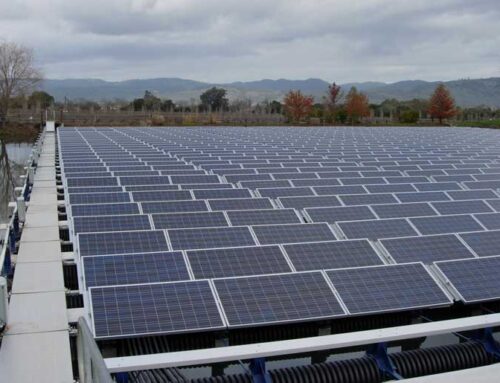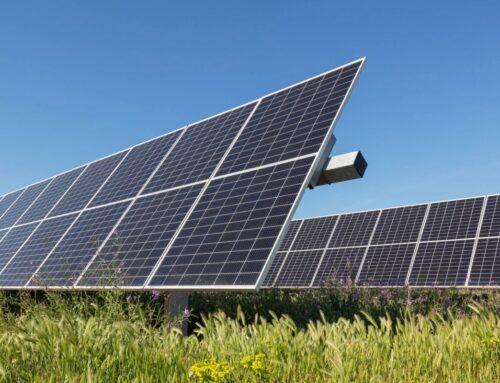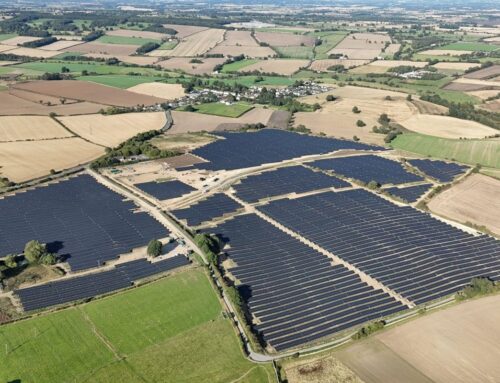Five Technologies That Could Revolutionize Renewable Energy—and the World
October 24, 2024

Across the globe, renewable energy’s momentum is converging with rapid technological advancement. In the United States alone, wind and photovoltaic (PV) solar generation are expected to see annual increases of 6GW and 35GW, respectively, with power generation from these sources projected to reach 2,476TWh and 2,090TWh by 2024. Falling technology costs, favorable policies, and rising energy prices are making renewables an increasingly attractive alternative to fossil fuels.[1]
However, challenges remain. Can renewables scale to meet the growing global energy demand? What about the issue of intermittency, which affects wind and solar power? The long-term success of the energy transition hinges on the ability of cutting-edge innovations to address these issues. The following five technologies are already showing great promise in doing just that.
1. Artificial Intelligence: Optimizing the Future of Energy
Artificial intelligence (AI) has evolved far beyond the industry buzzword phase, becoming a vital tool in the transition to sustainable energy. AI’s advanced forecasting capabilities enable it to optimize renewable energy generation by matching output with demand, using a combination of historical data and real-time weather information to predict production patterns with remarkable accuracy.
For instance, energy multinational Iberdrola has developed an AI-based system called MeteoFlow, which uses machine learning to forecast weather patterns and their impact on energy output. This allows Iberdrola to align plant production with energy demand more effectively, reducing waste and improving efficiency. Germany’s RWE also harnesses AI to optimize its wind farms, analyzing weather variables and adjusting operations to maximize capacity.
The rise of AI in the energy sector is evident in patent activity. Since 2017, filings related to AI technologies in energy have surged, with 26,355 patents filed in 2023 alone. This surge reflects AI’s growing importance in the renewable energy ecosystem.

Impact: For businesses and consumers alike, AI promises a more reliable and cost-effective energy supply, helping to stabilize energy prices and reduce inefficiencies across the grid.
2. Predictive Maintenance: Keeping the Future Running Smoothly
With the increasing reliance on renewable energy comes the need for maintaining vast and complex infrastructure. Predictive maintenance is emerging as a crucial tool, enabling a proactive approach to equipment upkeep. Through real-time monitoring and advanced analytics, predictive maintenance helps forecast potential issues before they become major problems, thereby reducing downtime and improving operational efficiency.
This approach is particularly valuable in the wind energy sector. Companies like Onyx Insight have successfully implemented predictive maintenance technologies for GE Renewable Energy’s onshore wind turbines as well as at Indonesia’s first utility-scale wind farm. Sensors embedded in turbines collect data on vibrations, temperature fluctuations, and acoustic signals. By analyzing this data, they can anticipate failures in key components such as drivetrains, pitch bearings and turbine blades before they occur, ensuring smooth operations and extending the life of critical components.[2]
Impact: Predictive maintenance minimizes costly repairs and unplanned downtime, ensuring that the growing infrastructure supporting renewable energy can operate efficiently for years to come.
3. Cloud Technologies: Managing an Evolving Grid
Cloud computing is transforming the way renewable energy is managed and integrated into the grid. As renewables expand, the ability to process vast amounts of data in real time is essential for maintaining grid reliability. Cloud platforms enable utilities to monitor and control renewable assets, optimize power supply forecasting, and manage energy production dynamically.[3]
For example, California-based utility SDG&E has deployed a cloud-supported private network to manage its renewable energy assets and storage systems. Through the use of edge computing—which processes data close to its source, such as at wind turbines—rapid decisions can be made in response to changes in energy production. This reduces latency and enables swift, real-time adjustments to the grid. Smart devices and sensors, connected via the cloud, collect and transmit data on energy production, enabling real-time monitoring and control.
Impact: As cloud technologies become more integral to energy management, they will ensure that the expanding renewable sector remains flexible, reliable, and scalable.
4. Energy Storage Solutions: Powering the Peaks and Troughs
The need for efficient energy storage has never been more pressing as renewable sources like wind and solar produce energy intermittently. Advanced storage solutions, such as synchronous condensers and new battery technologies, are playing a key role in stabilizing the grid and enabling the broader adoption of renewables.
At Uniper’s Killingholme power station in the UK, retired steam turbine generators have been converted into synchronous condensers, which help maintain grid inertia—a critical element for integrating renewable energy. On the battery front, lithium-ion (Li-ion) systems dominate the landscape, with major installations like Tesla’s 129 MWh battery in South Australia demonstrating their potential to stabilize grids and provide backup power.
However, new technologies like sodium-ion and redox flow batteries are gaining traction for their scalability and suitability for large-scale renewable integration. The International Renewable Energy Agency (IRENA) estimates that 475 GW of energy storage will be needed globally by 2030 to meet renewable targets.
Impact: By providing a buffer for intermittent renewable sources, these storage systems are key to ensuring that renewable energy can power the world consistently and reliably.
5. Digital Twins: Simulating Success in Renewable Design
The optimization of renewable energy systems starts well before they’re built, and digital twins are becoming an essential tool in this process. A digital twin is a virtual replica of a physical system that can simulate performance in real time, allowing for more precise and efficient design and operation.
In the US, the Department of Energy (DOE) is leading efforts to develop digital twins for floating offshore wind turbines through its ATLANTIS program. In 2022, the world’s first digital twin software for floating offshore turbines, Digifloat, was launched. This real-time digital representation of the WindFloat Atlantic project off the coast of Portugal allows operators to monitor and optimize the performance of floating wind farms.
Digital twin technology is also gaining traction in the UK, where the National Grid Electricity System Operator (ESO) has signed a memorandum of understanding to collaborate on the National Digital Twin Programme. This partnership aims to create a data-sharing infrastructure that will optimize energy management through digital twin technology.[4]
Impact: Digital twins reduce costs and optimize performance in renewable energy projects by providing real-time data and predictive insights, helping to avoid inefficiencies and maximize output.
Conclusion: Building the Future of Energy
The future of renewable energy is bright, but its success depends on overcoming the challenges of scalability, intermittency, and infrastructure integration. The five technologies discussed here—AI, predictive maintenance, cloud computing, energy storage, and digital twins—are already paving the way for a sustainable energy future.
By harnessing the power of these innovations, we can ensure that renewable energy not only meets today’s energy needs but also drives economic growth, improves reliability, and supports global sustainability goals for generations to come.
Discover further insights
To learn more, download our new report, “‘Challenges and opportunities in the US renewable energy sector”, published in association with Sterling Technology—the provider of premium virtual data room solutions for secure sharing of content, business process automation and collaboration for the M&A, corporate development, capital markets, private capital, banking and legal communities engaged in energy and renewables dealmaking.
[1] GlobalData report, “Power predictions 2024,” April 2024.
[2] GlobalData report, “Predictive Maintenance in Power,” July 2024.
[3] GlobalData report, “Cloud Computing in Power,” June 2024.
[4] GlobalData report, “Digital Twins,” March 2024.
<!– –>
Search
RECENT PRESS RELEASES
Related Post




